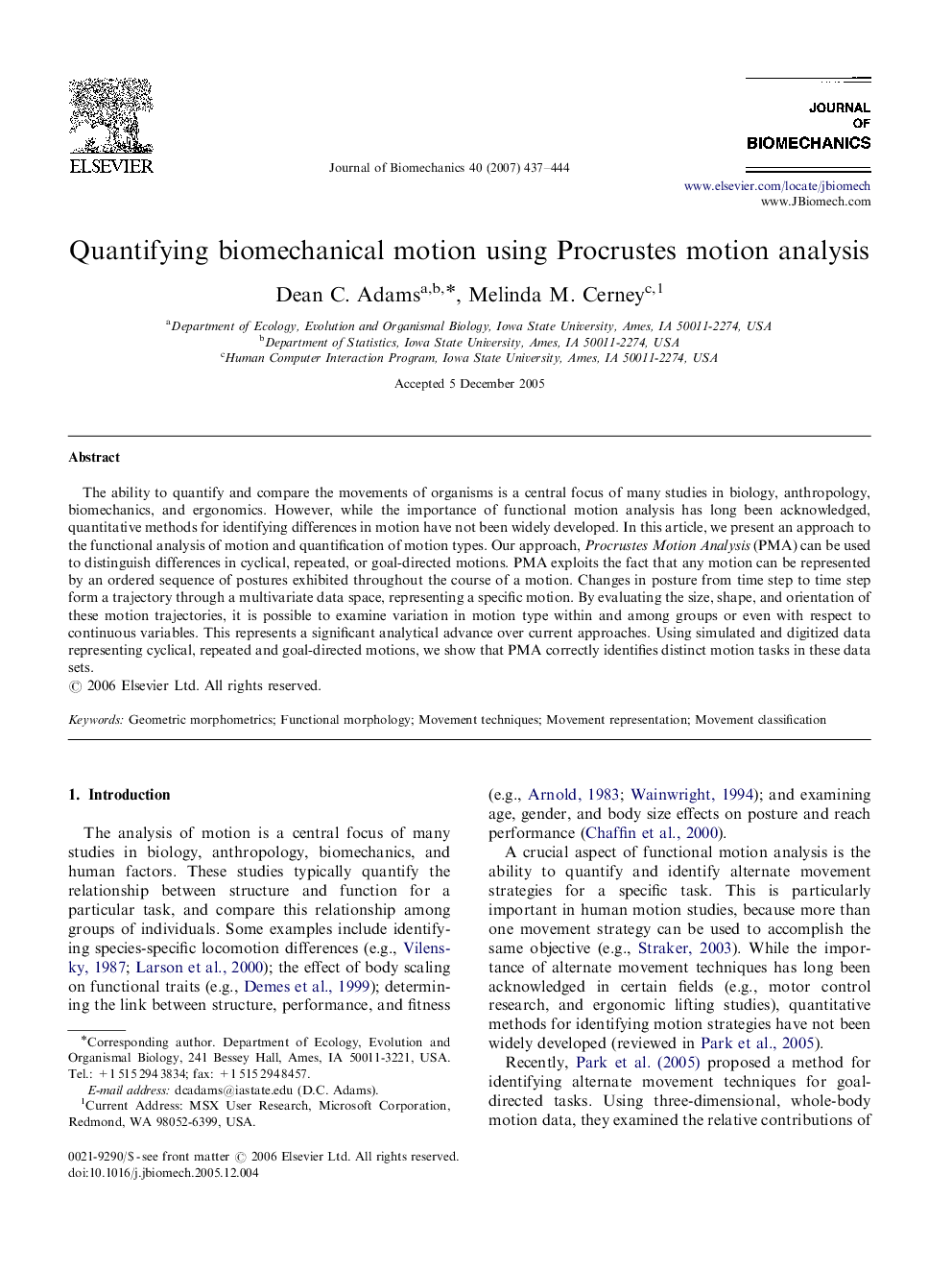| Article ID | Journal | Published Year | Pages | File Type |
|---|---|---|---|---|
| 874812 | Journal of Biomechanics | 2007 | 8 Pages |
The ability to quantify and compare the movements of organisms is a central focus of many studies in biology, anthropology, biomechanics, and ergonomics. However, while the importance of functional motion analysis has long been acknowledged, quantitative methods for identifying differences in motion have not been widely developed. In this article, we present an approach to the functional analysis of motion and quantification of motion types. Our approach, Procrustes Motion Analysis (PMA) can be used to distinguish differences in cyclical, repeated, or goal-directed motions. PMA exploits the fact that any motion can be represented by an ordered sequence of postures exhibited throughout the course of a motion. Changes in posture from time step to time step form a trajectory through a multivariate data space, representing a specific motion. By evaluating the size, shape, and orientation of these motion trajectories, it is possible to examine variation in motion type within and among groups or even with respect to continuous variables. This represents a significant analytical advance over current approaches. Using simulated and digitized data representing cyclical, repeated and goal-directed motions, we show that PMA correctly identifies distinct motion tasks in these data sets.
